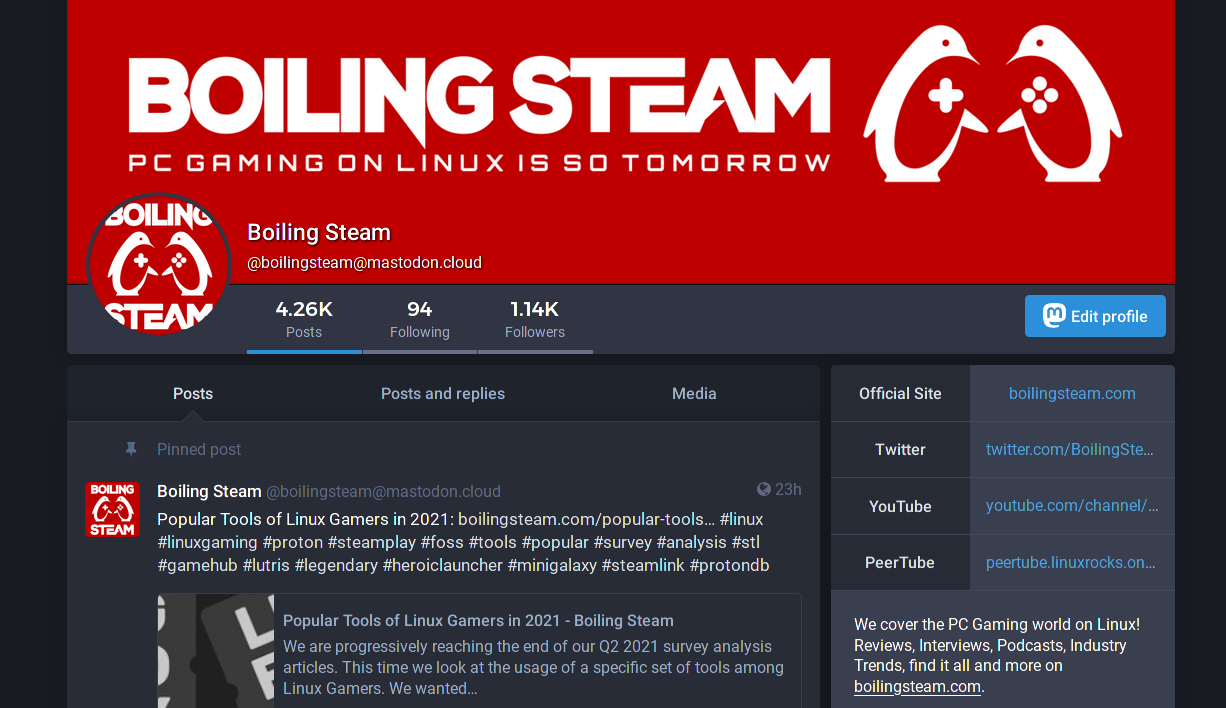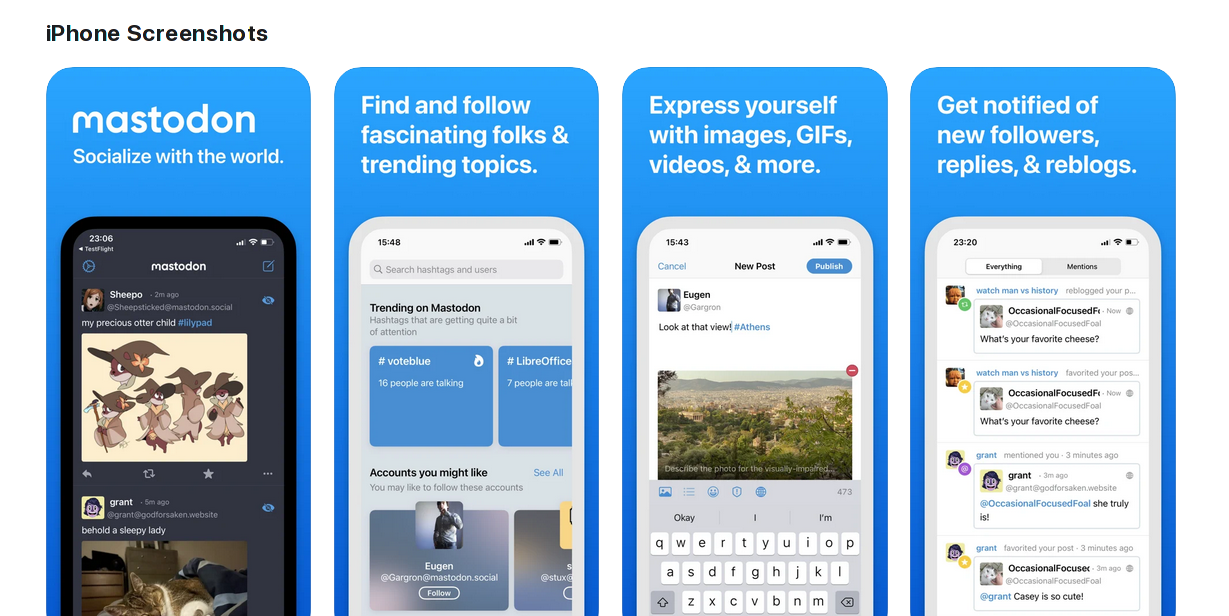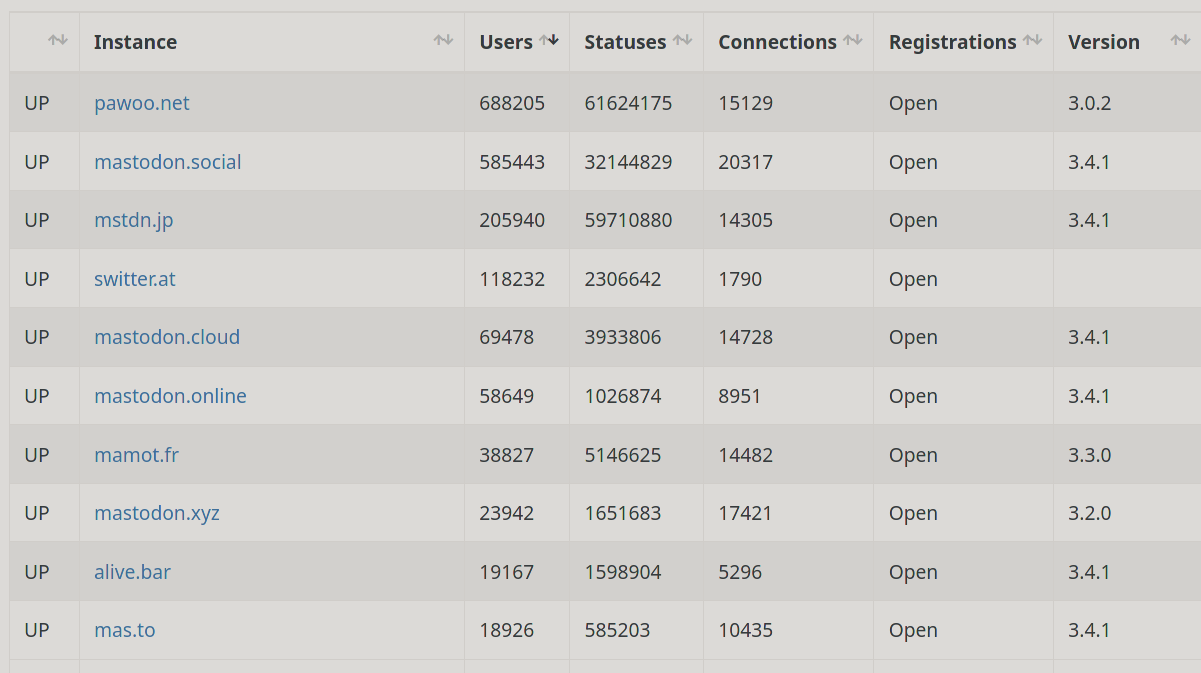Mastodon vs Twitter
Mastodon vs Twitter. The public loves to put a VS between entities, as if things are always in opposition to each other’s. At Boiling Steam, we use both, or rather, I use both since I am responsible for the communications on such networks. I am not going to go in a lengthy rant about why Twitter sucks in multiple ways, but if you were to make a short list:
- Twitter is well known to censor certain opinions.
- Twitter does not apply clear policies across the board. What seems OK for someone else may not be OK for you.
- Twitter uses tricks like shadowbanning, and directly influences what things trend over others.
Where there is a concentration of power, these things are bound to happen. But today, I am more interested in the actual user experience, especially when it comes to a publication like us.
Using Mastodon and Twitter
Our approach, for now I think about 2 years, has been to treat Mastodon as the key target network because of all its advantages. It’s FOSS, it’s part of ActivityPub… For those who are not familiar with it, ActivityPub is a decentralized social networking protocol (and an official W3C recommended standard), using a server/client structure communicating through a documented API interface, encouraging decentralization. It does what it claims, and there is anyway an audience on this side of the world too, especially when it comes to Linux users and gamers.
Then again, there is no reason for us not to send the same content (or at least most of it) to Twitter as well. We can expand our reach to where our readers are. We certainly cannot expect everyone to be on Mastodon (or even know about it!), while we certainly always encourage people to move to more decentralized platforms when possible.
So, in practice, what did we learn from these past few years?
Audience
Certainly unusual, we actually have a much bigger audience now on Mastodon than on Twitter. We just crossed the 1100 followers mark on Mastodon, while we are at ⅕ of that on Twitter.

And despite broadcasting the exact same content on both networks! The growth of the audience is also much faster on Mastodon, with approximately 2 to 3% followers increase every week. On Twitter, it’s usually at 1% or less. This probably means the gap between our following on both platforms will continue to grow, unless something changes on the Twitter side. Now, do I believe that all of these Mastodon accounts are legitimate? Nope. There’s quite a few accounts with zero followers and zero comments. Those could be bots or accounts created by scripts for spamming, tracking or other reasons.
Twitter: the “like” network. Mastodon: the “reblog” network.
There are quite a few differences as to how people use Twitter and Mastodon, and this shows in the engagement metrics. By engagement, I mean whether people react to the content we disseminate out there. There are two simple actions that are common between both platforms:
- Appreciation: Like (a heart on Twitter) / Favorite (a star on Mastodon)
- Spread: Retweet on Twitter / Reblog on Mastodon
For both Twitter and Mastodon, you should expect that the most common interaction will be the Appreciation. This gives you an indication if whatever you are sharing is somehow worthy (validation), but it does not expand your reach as nobody else will see it.
What you strive for is Spread, as this will cascade your content to followers of followers (snowball effect).
Let’s compare how users behave across both networks (the numbers are from a few months ago):
- Mastodon Appreciation: over the past 2 months, about 100 favorites for a follower base of about 900 = 11% like/follower ratio.
- Twitter Appreciation: over the past 2 months, about 70 likes for a user base around 180 on average= 38% like/follower ratio.
Over the same period this is the what it looks like for active spreading of posts:
- Mastodon Spread: 75 reblogs out of 900 followers = 8% reblog ratio
- Twitter Spread: 20 retweets out of 180 followers = 11% retweet ratio
From this we can infer the following:
- On average our content is somewhat less visible on Mastodon (if we consider likes as a proxy for visibility, as the audience between networks should not be massively different: people who follow us are interested in Linux and Linux gaming)
- While we may be less visible on Mastodon, when our content is seen, it’s more more likely to be reblogged (about 75% - as we get usually about 70 reblogs for 100 likes). On Twitter, even though many users can like what we post, they tend to be more shy about sharing it (20 retweets out of 75 likes = 26%). While I am not entirely sure why that is, it could be that Twitter is a more generalist network and that most users treat it as a way to track things in different places rather than to broadcast and externalize what they read. Again, this may be completely wrong. Happy to hear if anyone has an interesting take on such differences.
What this all means and how to break the momentum
Mastodon (at least with the current clients) does not use any kind of algorithm to reorder your feed. It appears based on timestamps. This is a good thing if you don’t want any bias in your feed. This is however not ideal if you are a publication: publications would like end users to see highly rated content with higher visibility. To be visible on Mastodon, there are two main strategies:
- Optimize your posts for your audience’s online time
- Send a much higher volume of posts (akin to spam?)
I do take a look at the sweet spots when it comes to posting to ensure the highest visibility, using a simple heat map checking how the past posts did on Mastodon (updated in real time - times are in Japan Standard Timezone timezone). Each square corresponds to a specific hour in the week, with the number indicating the number of unique posts so far, and the color representing the percentage of posts that were favorited (green is close to 100%, red= close to none, and then gradients in between).

This tool is far from being perfect, as:
- Favorites are not equal to visibility, so it’s not a perfect proxy, but on average it should make sense as a metric.
- Not all posts are comparable - the content will matter and influence how people will react to it
- Some time intervals have less data than others and are less reliable (I usually remove those from the heat map, hence the blanks)
Still, it’s fairly clear that there are some really bad times to post on Mastodon, and our audience being mostly based in the US and in Europe. There’s no point pushing for content when everyone is sleeping. And we should clearly avoid Saturdays!
While I spend far more time on Mastodon than Twitter as an end user, I do have to admit that the Twitter feed is usually more interesting to read, as things appear after they have been validated by other people in my network and outside of my network based on what I checked before. There’s also the fact that about everyone is on Twitter and the superstars in terms of content dissemination are there rather than on Mastodon.
While there is nothing wrong with the way Mastodon feeds work, there is some opportunity in between. What I don’t like about Twitter is the whole opacity in how things work behind the scenes, all the agenda and potential manipulation, and the pushing of ads or promoted posts. Pixelfed, also part of the fediverse, has also included some recommendations based on popular tags, while it seems to be at a very basic level (i.e. not customized at the user level).
Now let me tell you how to make Mastodon much better and beat Twitter at their game (at least service-wise).
Mastodon, or its derivative services, can massively improve by giving you the choice of an OPEN algorithm to use on your feed. The default time-stamp based feed is fine, but would I like to have, with one click of a button, the same feed based on the open-source recommendation engine “Engine A”, and switch to another “Engine B” just to see how the feed changes? You bet!
This kind of addition would probably make the engagement much better on Mastodon, and also give a strong incentive to explain how better Mastodon can be vs other networks. Being able to switch algorithms, and inspect how they work, and even build your own, is a very compelling argument to make and absolutely compatible with FOSS ideals.
Mastodon’s sustainability
Mastodon is a successful network. Many people predicted it would disappear in no time and would fail, yet it’s still very much alive and kicking, with several great clients to access it, on Mobile (Tusky on Android, and on iOS there’s the official Mastodon app, but there are plenty of alternatives) and on Desktop. It’s not growing very fast, though.

Based on the latest estimations I have seen the user base is more or less stagnating around one million users worldwide across all instances. Maybe it’s fine to remain a niche - or maybe it’s time to consider what can be done to attract more people without compromising the philosophy of it all.

You may wonder why I say that the community is at around 1 million users, while Pawoo in itself as the biggest instance is already more than 600k? Well, it’s a little complicated. Since Mastodon is decentralized, you typically do not connect to a single central server, but one of the numerous servers (=instances) available out there, interconnected as part of the whole network. Interconnected… with some limits. A certain instance can for example decide to NOT connect to specific set of certain instances, and this is what happened with Pawoo: mostly a Japanese community, with content that’s considered far from kosher by others (loli pics and more stuff in that genre) - and now largely cut away from the other instances. I don’t think this is a helpful approach - I’m pretty sure there are some decent people on Pawoo too (even if it’s a minority) and not being able to follow them is stupid and detrimental to the whole network. At the end of the day, on Mastodon you mostly follow other users, not feeds randomly chosen for you. There is no reason to restrict the freedom on the end user side (to follow and to block what they don’t like by themselves). Instances deciding this on their own are acting similarly to Twitter removing users or certain posts that they don’t like, albeit on the whole instance level. Will this make Mastodon less and less popular over time, as other options emerge? Who knows. Just so that you know, there are also people who claim that Mastodon is crumbling in many ways so you may want to read a few opinions around the web to make your own judgment. Just like everything in life, just about every choice is a set of trade-offs and what matters is to know what you are willing to accept, and move on. At the end of the day, the real test is whether the network is useful and working for you. Which brings us to what we will be doing next.
The Future
At Boiling Steam, no specific change in sight. We will keep treating Mastodon as our first target network for now (while everything is anyway published on Twitter as well). It has been working well so far, and we have interesting interactions and discussions, comments every week. I also have not personally seen too many obtuse people (touching wood) on Mastodon, and most Linux users we interact with have been either supportive or ready to discuss topics in a civil manner.
As for Twitter, it’s nice to see the elevated engagement, but our growth there is very, very slow. Probably because more established accounts/publications are more likely to get visibility and in turn followers and the algorithms play against us.
Anyway, this is a very appropriate time to let you know again that you can follow us on both networks if you are not already doing it :)
